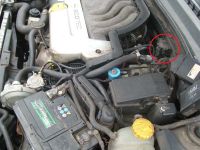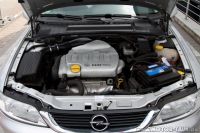Hello,
I was looking for a forum, but I did not find an entry that would describe exactly my symptoms, which is why I assume a new topic.
I have a problem with my VB (1.8 125km 2001, Z18XE engine), and now, when the outside air temperatures low, my vectra began to tug at the speed after heating the engine. In addition, the error P0170 pops up, from what I found is the composition of the fuel mixture. It does not always cause Checka to light up immediately. The jerking takes place only at low revolutions, for example when I stand at traffic lights and increases with increasing engine temperature. When driving, when the engine speed is higher, I do not notice any symptoms, the car also seems to turn on the normal speed and does not seem to lose its power. Until now, I managed to clean the throttle, replace the oxygen sensor and replace the candles. I wonder if the flowmeter may be guilty. I am asking for your opinions.
I was looking for a forum, but I did not find an entry that would describe exactly my symptoms, which is why I assume a new topic.
I have a problem with my VB (1.8 125km 2001, Z18XE engine), and now, when the outside air temperatures low, my vectra began to tug at the speed after heating the engine. In addition, the error P0170 pops up, from what I found is the composition of the fuel mixture. It does not always cause Checka to light up immediately. The jerking takes place only at low revolutions, for example when I stand at traffic lights and increases with increasing engine temperature. When driving, when the engine speed is higher, I do not notice any symptoms, the car also seems to turn on the normal speed and does not seem to lose its power. Until now, I managed to clean the throttle, replace the oxygen sensor and replace the candles. I wonder if the flowmeter may be guilty. I am asking for your opinions.




